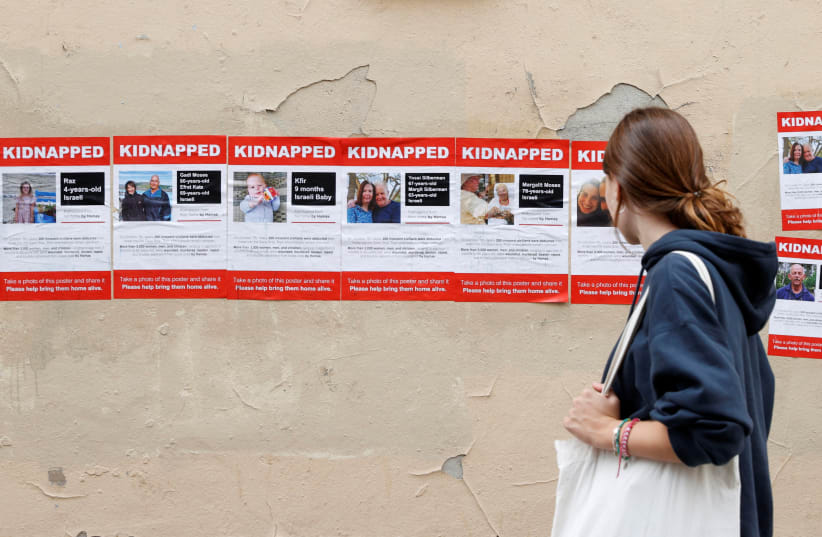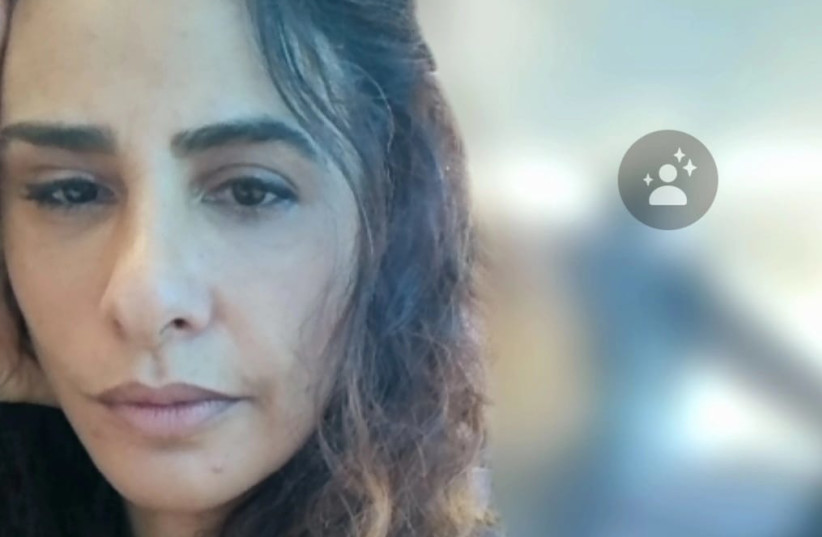None of the three dozen people volunteering at the Israel Defense Forces’ Shura base near Ramle who have seen the most horrible human remains of the Simchat Torah War has asked to be replaced. “We regard what we are doing as holy work,” said social worker Adi Skandrion.
Ordinarily, the Jaffa resident works for the Bat Yam Municipality, helping individuals and families in need of social, financial, emotional, and vocational support.
“On Monday, I was asked to volunteer to take families looking for the bodies of their loved ones in the morgue. I had no experience at this,” she told The Jerusalem Post in an interview, like most of the volunteers working in shifts around the clock, including on Shabbat.
The facility is ordinarily run by the IDF Chief Rabbinate that takes care of soldiers who have been killed in battle. Among those present now are pathologists, Zaka volunteers, dentists, photographers, IDF Chief Rabbinate staffers, Home Front Command soldiers, and representatives of the Health and Social Welfare Ministries.
Families of those declared dead or missing have been staying outside the facility for days on end, wondering why it takes so long for bodies – or in many cases burnt, decapitated bodies or body parts – to be identified quickly, said Skandrion. “They are provided with food and drink and what they need. But it takes time. Mistakes must not be made.
Soldiers are easier to identify, thanks to biometric data, dental x-rays, dog tags, and so on taken when a soldier enlists. Civilians, including babies and children for whom no Interior Ministry biometric data is available, is harder. DNA samples are taken from waiting families to help identify the remains.”
Biological samples taken from victims
The Forensic Medicine Institute at Abu Kabir in Tel Aviv started giving help a few days after the horrendous attack on residents of kibbutzim and moshavim near Gaza. By Saturday night, biological samples had been taken from all 1,110 bodies that were removed from the kibbutzim and moshavim adjacent to Gaza, of which 854 were civilians. But that doesn’t mean that all of the families could be informed of their identities. So far, according to the manpower division of the IDF, by Friday, about 360 have been identified, and more than 260 have already been buried.
“It’s hell. I can’t imagine that people have to see the results of terrorists’ atrocities,” said the social worker. “Trucks full of bodies have arrived here. One was filled with just children. I can’t describe what we have seen – Jewish families burnt while embracing each other and having to be separated. People, babies, without heads. Soldiers with damage from bombs and bullets. It was like a butcher shop, victims in plastic bags but with horrible smells.”
Among the volunteers on duty are young women from officers’ courses who were asked to make coffins, and Hesder Yeshiva students handling the body parts. “Nobody, including the women soldiers, was able to avoid seeing it all.”
The team asked family members for signs to identify their loved ones – tattoos, personal items, and other means. But many of the children and the elderly do not have biometric records, having not taken out passports. The volunteers examine the bodies to find such signs in order to identify them. “Most people want to see, even though it’s terribly traumatic – but they want closure.”
After they are identified, the burial societies perform cleansing of the dead (tahara).
Shockingly, among the dead are the bodies of the terrorist murderers that have to be identified and separated from those of their victims. Many of the terrorists stole their victims’ cell phones, took photos of the people they murdered, and sent them to all their contacts.
The social worker nevertheless calls the Shura base “a sane place. It has an air of holiness. Nobody working here cries. They supply support with great sensitivity. This strengthens us. It’s hard to sleep, but we will feel the trauma later, when our job is all over. We will work until we finish,” she said, adding, “I am starting my morning shift at Shura at 6 a.m. on Sunday.”

